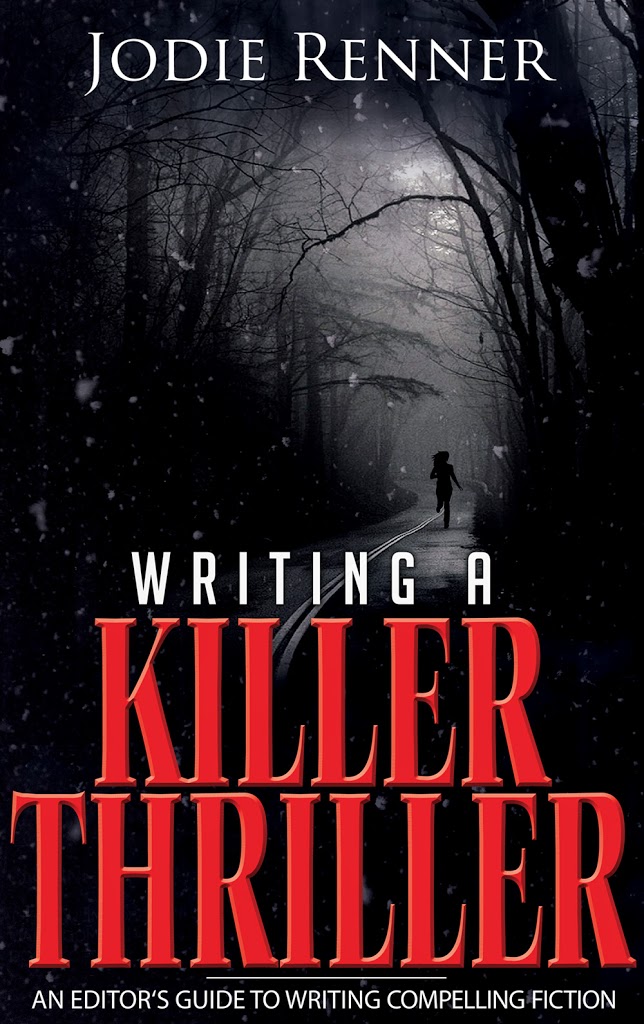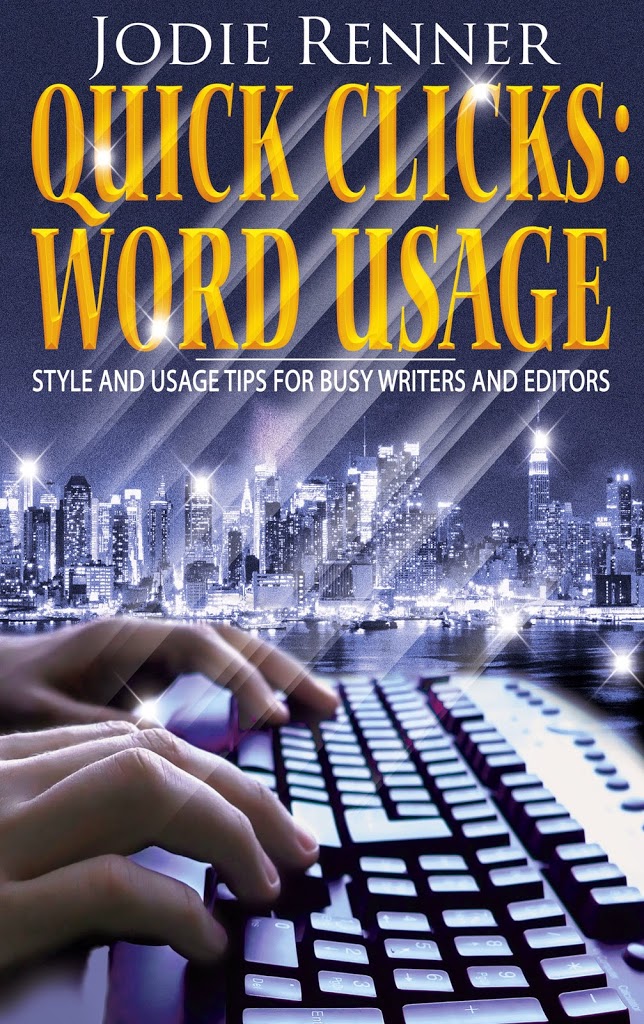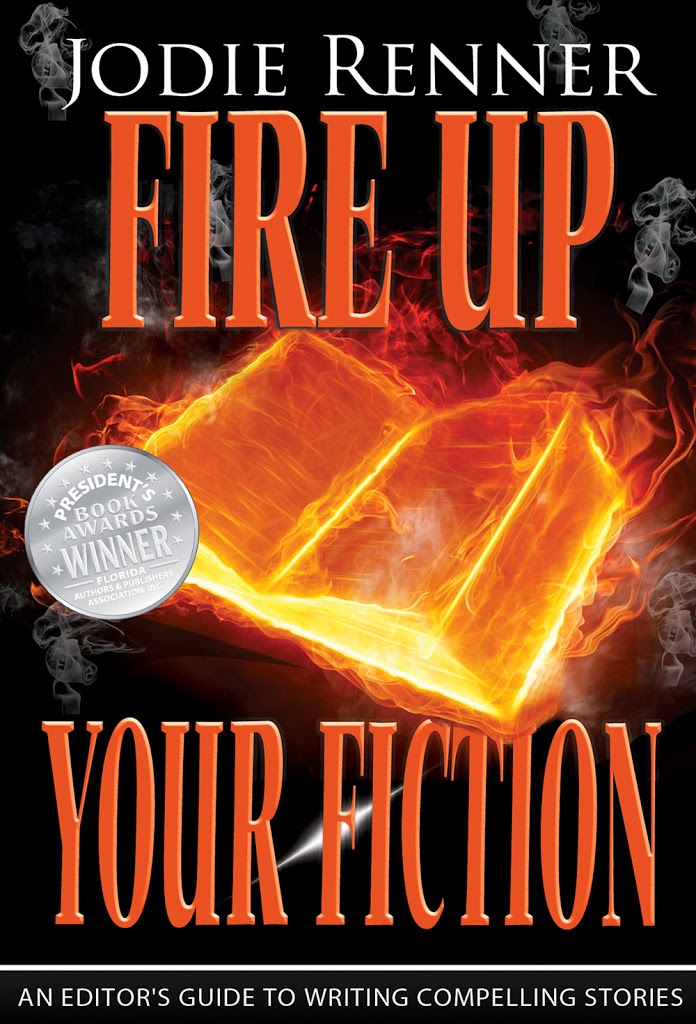 by Jodie Renner, editor, author, speaker
by Jodie Renner, editor, author, speaker
To create a page-turner that sells and gets great reviews, be sure to keep your readers curious and worried throughout your novel. That will keep them turning the pages. You can add tension, suspense, and intrigue to your story very effectively with techniques like foreshadowing, withholding or delaying information, stretching out the tension, and using epiphanies and revelations. (All discussed at length in my book Writing a Killer Thriller.)
Foreshadowing is about sprinkling in subtle little hints and clues as you go along about possible revelations, complications, and trouble to come. It incites curiosity, anticipation, and worry in the readers, which is exactly what you want. So to pique the readers’ interest and keep them absorbed, be sure to continually hint at dangers lurking ahead.
Use foreshadowing to lay the groundwork for future tension, to tantalize readers about upcoming critical scenes, confrontations or developments, major changes or reversals, character transformations, or secrets to be revealed.
Foreshadowing is great for revealing character traits, flaws, phobias, weaknesses, and secrets; building character motivations; and increasing reader engagement.
Foreshadowing also adds credibility and continuity to your plot. If events and changes are foreshadowed, then when they do occur, they seem more believable and natural, not just a random act or something you suddenly decided to stick in there. For example, if your forty-something, somewhat bumbling detective suddenly starts using Taekwondo to defeat his opponent, you’d better have mentioned at some point earlier that he has taken Taekwondo lessons, or else the readers are going to say, “Oh, come on! Give me a break. Suddenly he’s Jackie Chan?”
But for every hint you drop, make sure you follow through later in the novel. Be sure not to drop in what seems like a critical piece of info or object, but ends up not foreshadowing anything. Readers will feel deceived and cheated. (For more on this, Google “Chekhov’s gun” or see my book.)
Also, do be subtle about your little hints. If you make them too obvious, it takes away the suspense and intrigue, along with the reader’s satisfaction at trying to figure everything out.
Some ideas for foreshadowing:
Here are some ways you can foreshadow events or revelations in your story:
– Show a pre-scene or mini-example of what happens in a big way later, for example:
The roads are icy and the car starts to skid but the driver manages to get it under control and continues driving, a little shaken and nervous. This initial near-miss plants worry in the reader’s mind. Then later a truck comes barreling toward him and…
– The protagonist overhears snippets of conversation or gossip and tries to piece it all together, but it doesn’t all make sense until later.
– Hint at shameful secrets or painful memories your protagonist has been hiding, trying to forget about.
– Something on the news warns of possible danger – a storm brewing, a convict who’s escaped from prison, a killer on the loose, a series of bank robberies, etc.
– Your main character notices and wonders about other characters’ unusual or suspicious actions, reactions, tone of voice, facial expressions, or body language. Another character is acting evasive or looks preoccupied, nervous, apprehensive, or tense.
– Show us the protagonist’s inner fears or suspicions. Then the readers start worrying that what the character is anxious about may happen.
– Use setting details and word choices to create an ominous mood. A storm is brewing, or fog or a snowstorm makes it impossible to see any distance ahead, or…?
– The protagonist or a loved one has a disturbing dream or premonition.
– A fortune teller or horoscope foretells trouble ahead.
– Make the ordinary seem ominous, or plant something out of place in a scene. Zoom in on an otherwise benign object, like that bicycle lying in the sidewalk, the single child’s shoe in the alley, the half-eaten breakfast, etc., to create a sense of unease.
– Use objects: your character is looking for something in a drawer and pushes aside a loaded gun. Or a knife, scissors, or other dangerous object or poisonous substance is lying around within reach of children or an assailant.
– Use symbolism, like a broken mirror, a dead bird, a lost kitten, or…
~ A no-no about foreshadowing:
But don’t step in as the author giving an aside to the readers, like “When she woke up that morning, she had no idea it would turn out to be the worst day of her life.” We’re in the heroine’s head at that moment, and since she has no idea how the day is going to turn out, it’s breaking the spell, the fictive dream for us to pass out of her body and her time frame to jump ahead and read the future.
~ Don’t like to plan your story out first? Just go ahead and write your story, then work backward and foreshadow later.
If you hate to outline and just want to start writing and see where the characters and story take you, you can always go back through your manuscript later and plant clues and indications here and there to hint at major reversals and critical events. Doing this will not only increase the suspense and intrigue but will also improve the overall credibility and unity of your story.
And remember to sprinkle in the foreshadowing like a strong spice – not too much and not too little. If you give too many hints, you’ll erode your suspense. If you don’t give enough, readers might feel a bit cheated or manipulated when something unexpected happens, especially if it’s a huge twist or surprise.
And again, the operative word is subtle. Don’t hit readers over the head with it. Not all your readers will pick up on these little hints, and that’s okay. It makes the ones who do feel all the more clever.
For more techniques for adding conflict, tension, suspense, and intrigue to any genre of fiction, check out Jodie’s book, Writing a Killer Thriller.

Jodie Renner is a freelance fiction editor and the award-winning author of three craft-of-writing guides in her series An Editor’s Guide to Writing Compelling Fiction: Captivate Your Readers, Fire up Your Fiction, and Writing a Killer Thriller. She has also published two clickable time-saving e-resources to date: Quick Clicks: Spelling List and Quick Clicks: Word Usage. You can find Jodie at www.JodieRenner.com, www.JodieRennerEditing.com, her blog, http://jodierennerediting.blogspot.com/, and on Facebook, Twitter, and Google+.

